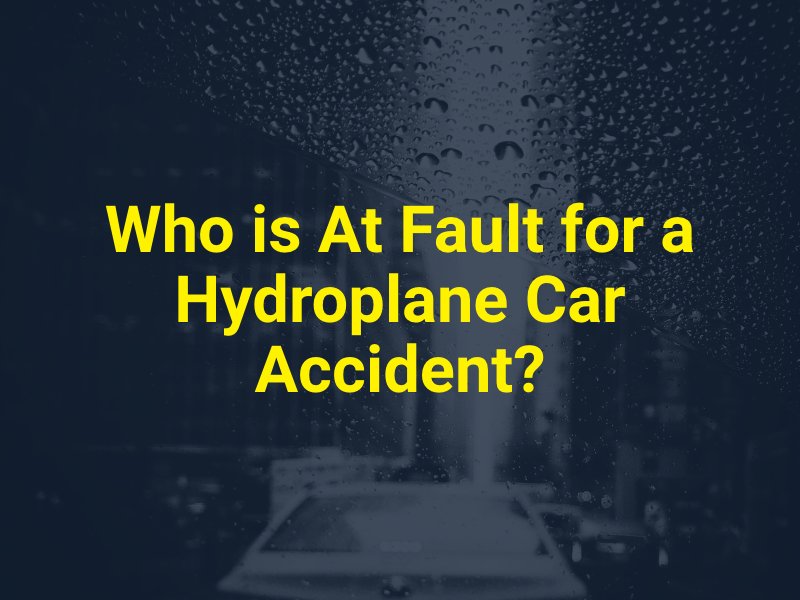Car accidents are inevitable, especially if you live in a rainy state. Hydroplaning crashes happen when the tires of a car slide out of control on a wet or slick surface, which makes the driver lose control of the car. Knowing about hydroplaning and who might be responsible for damages is essential for drivers, especially those who live in areas with frequent or heavy rainfall.
Speeding or other risky behavior behind the wheel can lead to an increased risk of hydroplaning. Additionally, failing to replace worn-out or bald tires or not maintaining the car’s brakes and steering components can also increase the risk of hydroplaning.

Determining liability in hydroplaning car accidents can be complicated, and multiple parties may be held responsible. Most commonly, the following parties could be responsible:
In most cases, the driver who caused the hydroplaning accident will be held liable if it can be proven that they were engaging in negligent behavior.
However, there are scenarios in which another party may be liable. For example, if a third driver creates a situation that forces another driver to react quickly, resulting in an accident for you, they may both be held responsible for any resulting accidents.
In some cases, municipalities or state governments may be held liable for hydroplaning accidents.
For example, if a municipality failed to maintain drainage systems, causing water to accumulate on the road, they could be held responsible for any resulting accidents. Additionally, if the design of the road contributed to hydroplaning accidents, such as by not including proper grooves or other traction-increasing measures, the state may be held liable.
In cases where hydroplaning accidents are caused by defective tires, the tire manufacturer may be held responsible. This can happen if the tires have insufficient treads or other design defects that make them less capable of gripping the road, especially when it’s raining or right after it has rained.
Depending on speed, road conditions, visibility, and the type of cars involved, hydroplaning incidents can range from small fender benders to devastating crashes.
If you’re involved in a car accident, call 911 immediately and wait for law enforcement to come to the scene. Calling 911 can ensure that you receive immediate medical attention and that the authorities document the incident.
This documentation can be helpful if you decide to make a claim or file a lawsuit later. In some cases, hydroplane accidents can also impact other drivers or the safety of pedestrians, and calling 911 can help get them the necessary assistance as well.
Meanwhile, if possible, take photos and videos of the incident, the vehicles involved, and any evident injuries. This information can be critical in proving fault and damages in a personal injury case.
Additionally, obtain contact information from any parties involved and any witnesses who saw the accident.
Following your conversation with law enforcement, it is smart to visit the hospital or see a doctor immediately.
Hydroplane accidents can have serious and lasting consequences for those involved. Fortunately, a personal injury lawyer can help you navigate the legal system and recover the compensation you deserve. Contact our Mesa car accident lawyers today to schedule a free consultation.